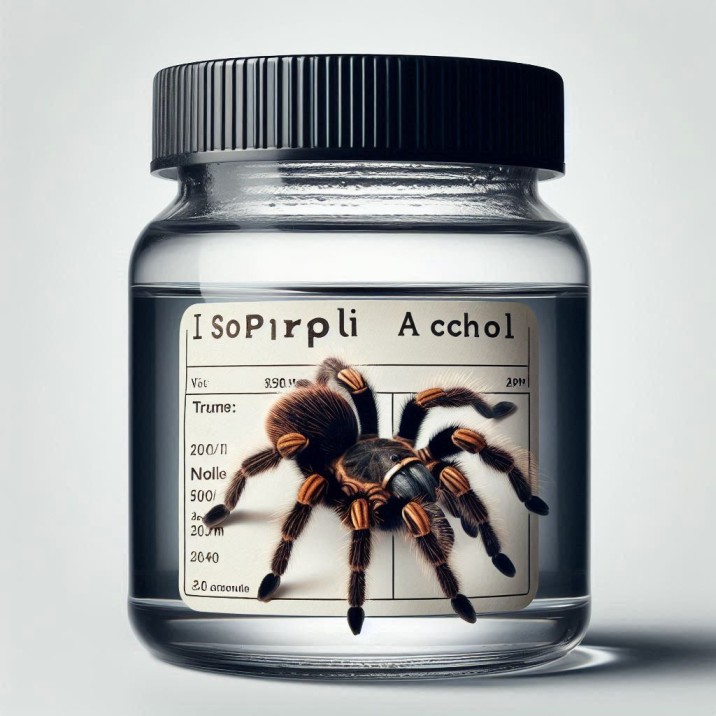Table of Contents
- Introduction
- how to preserve tarantula?
- Why Preserve a Tarantula?
- Understanding Tarantula Anatomy
- Materials Needed for Tarantula Preservation
- Basic Supplies
- Safety Gear
- Step-by-Step Guide to Preserving a Tarantula
- Initial Preparation
- Preservation Methods
- Drying and Displaying
- Common Mistakes to Avoid
- Caring for Preserved Tarantulas
- FAQs
- Conclusion
Introduction
Table of Contents
Have you ever been fascinated by the mysterious world of tarantulas and wondered how to keep one forever? Preserving a tarantula can be a thrilling and educational experience. This guide will walk you through the process of how to preserve tarantula using simple steps that even a fifth grader can understand! Whether you’re a budding scientist or just someone who loves creepy crawlies, this guide is for you.
Why Preserve Tarantula?
Preserving tarantula helps in studying its anatomy and appreciating its unique beauty. It’s also a great way to create educational displays for schools and museums. Plus, it allows you to keep a memory of your exotic pet or a specimen you found in nature.

Understanding Tarantula Anatomy
Before diving into the preservation process, it’s essential to understand the anatomy of a tarantula. Tarantulas have two main body parts: the cephalothorax and the abdomen. They also have eight legs, fangs, and many tiny hairs. Knowing these parts will help you during the preservation process.
Materials Needed for Tarantula Preservation
Basic Supplies
To start preserving your tarantula, you’ll need the following:
- Preservative Solution (Isopropyl alcohol 70%)
- Small Plastic or Glass Container with a lid
- Tweezers
- Needle and Thread
- Soft Brush
- Paper Towels
- Cotton Balls
- Pins and Styrofoam Board

Safety Gear
Always wear gloves and safety glasses when handling chemicals. Work in a well-ventilated area to avoid inhaling fumes.
Step-by-Step Guide to Preserving Tarantula
Initial Preparation
- Clean the Tarantula: Use a soft brush to remove any dirt from the tarantula’s body. Be gentle to avoid damaging the delicate hairs.
- Position the Tarantula: Place the tarantula on a Styrofoam board and arrange its legs in a natural pose. Use pins to hold the legs in place.
Preservation Methods
Using Isopropyl Alcohol
- Prepare the Solution: Fill a container with 70% isopropyl alcohol. This will help in preserving the tarantula’s color and structure.
- Submerge the Tarantula: Carefully place the tarantula into the container, ensuring it’s fully submerged. Seal the container with a lid.
- Leave to Soak: Allow the tarantula to soak for 1-2 weeks. This helps to dehydrate the body and prevent decay.

Using Drying Methods
- Remove the Tarantula from Alcohol: After soaking, gently remove the tarantula from the container and pat dry with paper towels.
- Stuff the Abdomen: Use a small amount of cotton to stuff the abdomen. This helps in maintaining its shape as it dries.
- Air Dry: Place the tarantula in a dry, well-ventilated area for several days. Ensure it remains in its natural pose.
Drying and Displaying
- Final Touches: Once dry, remove any excess cotton from the tarantula’s body. Use a needle and thread to secure the body parts if necessary.
- Display: Mount your preserved tarantula on a display board. You can use a glass case to protect it from dust.
Common Mistakes to Avoid
- Using Incorrect Alcohol Concentration: Always use 70% isopropyl alcohol. Higher concentrations can cause the tarantula to become brittle.
- Not Positioning the Tarantula Properly: Ensure the tarantula is in a natural pose before drying, as it will be difficult to reposition once dry.
- Insufficient Drying Time: Allow enough time for the tarantula to dry completely to avoid mold growth.
Caring for Preserved Tarantula
- Keep Out of Direct Sunlight: Sunlight can fade the colors of your preserved tarantula.
- Avoid Humidity: Store in a dry place to prevent moisture buildup, which can lead to mold.
- Regular Dusting: Use a soft brush to gently remove any dust from the tarantula’s body.
FAQs
- Q: How long does it take to preserve a tarantula?
A: The entire process can take between 1-3 weeks depending on the drying method used. - Q: Can I use other types of alcohol for preservation?
A: It’s best to use 70% isopropyl alcohol for optimal results. - Q: Is preserving tarantula safe?
A: Yes, as long as you follow safety guidelines and handle chemicals with care. - Q: Can I preserve tarantula found in nature?
A: Yes, but ensure you have the proper permits if required by local regulations. - Q: How do I maintain the color of my preserved tarantula?
A: Keeping it out of direct sunlight and avoiding humidity will help maintain its color.
Conclusion
Preserving a tarantula can be a rewarding experience, offering both educational and aesthetic value. By following the steps outlined in this guide, you can successfully preserve your tarantula and create a lasting piece of natural art. Remember to handle your tarantula with care and enjoy the fascinating process of preserving tarantula!

